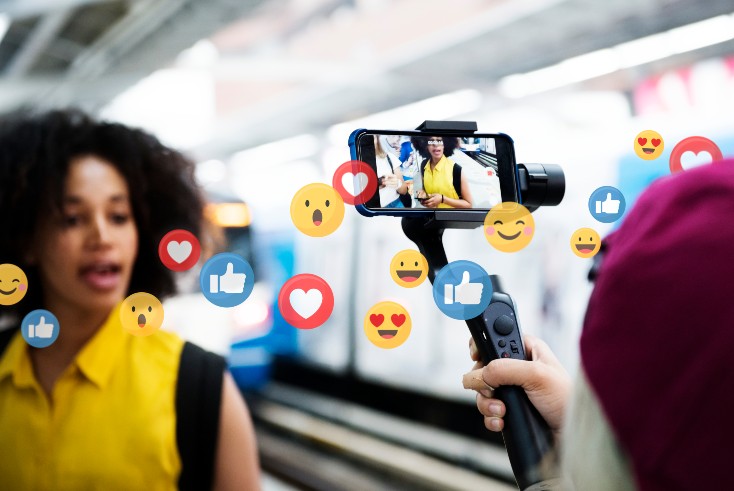The proof of influence

Opinion: Strategy Leaders
Media planners have an opportunity to leverage social proof with data-led influencer strategies, but must not forget it is humans that can navigate the complexities of the market.
With Insider Intelligence forecasting that marketing spend on influencers will eclipse $7bn by 2024 in the US, last month’s Cannes Lions Grand Prix awards for Social & Influencers highlighted how much this space is evolving and that much of the best work is about integrating influencers or creators into an overall communications approach and creative idea.
When you consider why the creator marketplace continues to grow in prominence, it ultimately feeds into the broader idea of leveraging social proof, an increasingly powerful mechanic for changing behaviour, particularly for younger audiences.
Social proof is a psychological concept rooted in behavioural science. It suggests people tend to rely on the actions and opinions of others to determine the appropriate behaviour in a given situation. It is a form of social influence that affects people’s decision-making processes and is based on the ideas first presented by Dr Robert Cialdini.
In practice, if people perceive a brand or product to be unpopular that becomes the perceived norm, whether it is true or not, and a vicious circle is created. The less we see other people doing something, the less appealing it becomes.
Yet studies show it’s also possible to create the illusion of popularity and thus reverse a decline.
This is important because over the last decade the social media ecosystem and its evolution towards recommendation algorithms over friendship circles can supercharge social proof if brands get it right.
Shaping mindsets
Whether it is offering financial advice or choosing an outfit, reputable influencers gain their currency by establishing themselves as authorities in their respective fields. Trust is earned through their knowledge and expertise, their endorsements provide social proof to their followers, who put great stock in their recommendations.
The bandwagon effect also comes into play; a cognitive bias that suggests people are more likely to adopt a belief or behaviour if they see others doing the same.
Furthermore, social identity plays a role. People often associate themselves with particular social groups and identify with the influencers they follow. Thus, when an influencer recommends a product, they can feed the followers’ sense of identity by aligning themselves with that influencer’s choices. This creates social proof as followers believe adopting the recommended product will help them fit in with or be part of a desired group.
To cap it all, influencers commonly provide testimonials or reviews of products or services. Their positive experiences and feedback serve as social proof, influencing their followers’ attitudes and behaviours.
Where it gets tricky
The OMG Media Intelligence Unit’s Theme-onomics work shows that 45% of adults consume content from creators and influencers each week, and amongst 18-44s more time is spent with influencers and creators than SVOD, podcasts or gaming.
It is a significant audience and rightly entices marketers. And yet influencer marketing has its challenges that need to be carefully navigated.
The sheer volume of influencers can be bewildering with Forbes recently estimating there to be somewhere in the region of 50 million globally. Some have mass scale reaching millions, whether it’s my son’s favourite The Gaming Beaver with 3 million subscribers or my daughter’s preference Moriah Elizabeth, who has nearly 10 million subscribers; whilst at the other end of the spectrum are micro-influencers operating in niche areas but with some of the highest engagement rates on Instagram.
Influencers are therefore like any other media channel where the role of channel needs to be considered as part of the overall strategy, and then choices can be made within the influencer space on the type and range required.
The influencer market is also prone to unpredictable trends that can make it challenging or risky for brands. For example, consider the recent rise of deinfluencing, in which social media personalities help followers decide where not to spend their money.
Meanwhile, amid the cost of living crisis, Canvas8 research shows that 44% of British Gen Zers report that they’ve been infuriated by the lavish lifestyles of certain influencers, with 42% reporting that they had regretted their purchases. The risk of a brand misjudging a partnership’s potential is therefore significant.
There are two ways to approach these challenges. First, brands need to ensure the selection process remains rooted in safety, fairness, and transparency. One way of doing this is using a resonance, reach and responsibility framework:
- Social resonance: compares an influencer’s engagement to their audience size to understand the impact and effectiveness of their content.
- Social reach: an influencer’s audience size relative to their position as a micro, mid-tier, macro, or celebrity status.
- Social responsibility: scores an influencer based on the quality of their output in relation to our brief’s selection criteria and the overall risk assessment (e.g. comprehensive web and social platform searches backdating two to three years).
Second, it’s also essential to ensure human oversight from trusted experts. Use people that live and breathe this world. Data can underpin a strategy, but only humans (for now) can navigate the subtleties of a market, understand the shifting cultural codes, and ensure the right partnerships are made and managed.
Evolving strategies
Once brands have found an influencer or creator strategy that works for them, they might begin to take on more sophisticated plans which leverage social proof further and go beyond pure endorsement or recommendation.
The truly aspirational brand might even attempt to leverage the inverted marketing model used by some of the most successful influencers: building an audience first before tailoring a product just for it. We’ve seen this played out to astonishing effect by Mr Beast with Feastables, and through KSI & Logan Paul’s Prime drink.
They most likely didn’t have these products in mind when they started on their journey of influence, but these examples certainly prove that influencers and creators can be a way of co-creating products and exploding creative ideas.
They are now central to many media plans and offer a way of connecting different channels together and ultimately make social proof real.
 Simon Carr is chief strategy officer at Omnicom media agency Hearts & Science
Simon Carr is chief strategy officer at Omnicom media agency Hearts & Science
Strategy Leaders: The Media Leader‘s weekly bulletin with thought leadership, news and analysis dedicated to excellence in commercial media strategy.
Sign up for free to ensure you stay up to date every Thursday.



